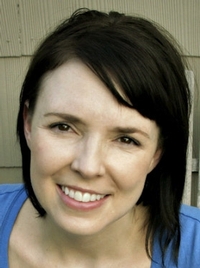Jen Henderson
Each year at the AMS student conference dozens of young scholars in the physical sciences approach me about my research and educational path in the social sciences. They are eager to learn how to combine their interests with the methods and literatures of my own to more holistically approach complex societal problems. Yet there is no clear place for these hybrid scholars in AMS—nor in respective sectors of employment. Similarly, I work with National Weather Service forecasters whose jobs are in flux as they move from explicit predictors of weather to communicators of uncertainty. Many young students in meteorology programs are eager to embrace these multifaceted roles even as they self-develop unique university curricula that anticipate jobs they can’t yet articulate. AMS could function as an important boundary organization to help facilitate the success of this new generation of hybrid scholars and practitioners.
To this end, as an AMS Councilor, I would like to focus on three main goals:
- Engage student and early career scholars interested in weather / climate research in the physical and social sciences to help identify current professional development needs and articulate challenges faced in future careers—and to develop ongoing mechanisms to ensure that such pathways to success are supported beyond the university.
- Develop strategies to connect with diverse communities and create a robust pipeline of underrepresented students and scholars who might become more active in the AMS. Great strides have been made on this front, as evidenced by minority scholarships, Women in Atmospheric Sciences Luncheon, and support of CoRioLis and CoWx receptions at the annual meeting. However, there is still much to do to understand and minimize barriers for access to careers and continued advancement in the long term, as well.
- Leverage relationships built between the AMS and National Weather Association to create more opportunities for operational and broadcast meteorology work to be informed by the latest research and for practitioner challenges to shape research agenda. I would work to generate activities and programs that bridge the two and facilitate greater membership and mutual engagement in both societies—perhaps through the annual or local regional meetings.
